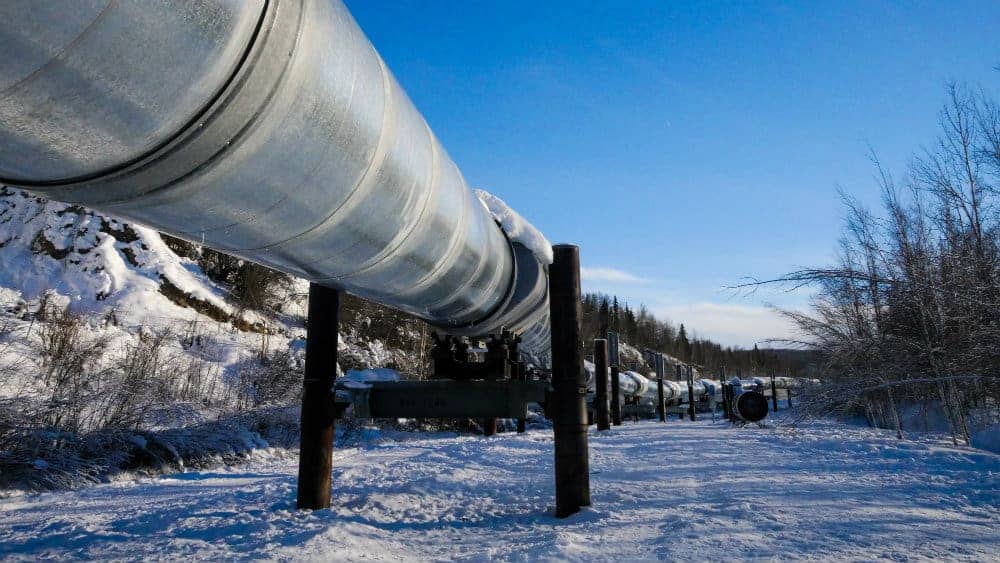Oil’s latest weakness, which sees the North American benchmark West Texas Intermediate (WTI) trading at around US$52 per barrel, doesn’t bode well for Canada’s energy patch.
The latest slump can be attributed to the coronavirus outbreak, fanning fears of a broader global economic slowdown that would lead to significantly lower demand for energy. There are even concerns that oil could once again collapse causing WTI to plunge to under US$50 per barrel during 2020.
Worsening outlook
It isn’t only the coronavirus that’s weighing on the outlook for oil. There were considerable existing concerns that global economic growth could slow in 2020. The outbreak has only magnified those fears because of its potential impact on China, the world’s second-largest economy and consumer of energy.
Softer manufacturing and construction activity in China were already weighing on demand for energy. There are also still considerable risks posed by heightened trade tensions between the U.S. and China.
China is in the midst of a massive debt bubble, limiting Beijing’s ability to stimulate growth while increasing the potential impact of the coronavirus and reduced demand for exports.
The East Asian nation is known as the world’s workshop because it’s responsible for around 25% of global manufacturing output and is highly dependent on the export of manufactured goods to drive economic growth.
The IMF’s 2020 GDP growth forecast for China is 5.8%, which is lower than the 6.1% predicted for 2019 and substantially lower than the 6.6% reported for 2018, thereby impacting demand for commodities including oil and hence prices.
Slower growth in China will have a significant negative effect on oil because it’s the world’s second largest consumer of oil and related petroleum products.
It isn’t only demand side fears that are applying significant pressure to energy prices, global supply growth has not diminished as appreciably as anticipated.
The recent optimism regarding crude was primarily driven by OPEC and Russia’s decision to shave a further 500,000 barrels daily off their collective output for the first three months of 2020.
This indicates that once those additional cuts come to an end global supply will grow amid an environment where a significant oil glut already exists, thereby pushing prices lower.
U.S. oil production growth has not slowed as expected and 2020 output is expected to expand by 1.06 million barrels daily to a record 13.3 million barrels daily.
The world’s largest economy and oil producer will, according to the U.S. EIA, become a net oil exporter during 2020. Those events will apply substantial pressure to oil forcing prices lower and potentially, when combined with demand side risks, create a perfect storm that will spark the next oil price collapse.
These factors don’t bode well for heavily indebted oil producers like MEG Energy (TSX:MEG) which finished the third quarter 2019 with a whopping $3.3 billion of long-term debt. MEG’s debt was a very worrisome six times its trailing 12-month adjusted funds flow, indicating that it isn’t manageable, and the company is extremely vulnerable to weaker oil.
To boost its financial flexibility, MEG refinanced US$800 million of notes due for repayment in 2023, US$400 million of the $1 billion of notes maturing in 2024 and redeemed US$100 million of debt instruments falling due in 2025.
This has extended the maturity profile of its debt, reducing the financial pressure on MEG, giving it greater flexibility to manage weaker oil.
MEG is also exposed to the additional volatility and risk associated with the Canadian heavy oil benchmark Western Canadian Select (WCS). The mandatory production cuts introduced by Alberta in 2019 significantly buoyed prices to see the price differential between WCS and WTI narrow considerably, but widened considerable to be around US$ per barrel. That is further weighing on MEG’s profitability and outlook.
Looking ahead
Crude will remain weak for the foreseeable future and there is the potential for yet another price collapse, which could see WTI plummet to under US$50 per barrel. That would have a sharp impact on the energy patch and those heavily indebted oil producers like MEG.
This makes it imperative that investors only buy those energy stocks with solid balance sheets, quality oil assets and low-cost operations.









